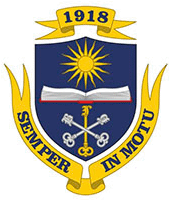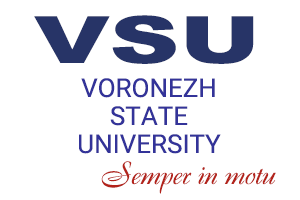This year, students from the Department of Human Geography and Regional Studies at the Faculty of Geography, Geoecology, and Tourism of Voronezh State University headed by the Head of the Department, Natalia Yakovenko, and Associate Professor Igor Komov, completed practical training in the Republic of Adygea.
The distinguishing feature of the inter-zonal training is that its route lies within various natural zones and covers a wide territory from the southern Russian steppe to submontane regions of the Caucasus Mountains. Students learn the peculiarities of the natural zones, distinguishing features of the land development, traditions and every day life of the population, and visit manufacturing facilities and tourist sites. During their practical training, they study local history and learn to be guides. In the mountainous part of the route, students study glaciers in the southern part of Adygea and on the northern slopes of the Greater and Lateral Caucasian ridge (they take about 18.8 km2), glaciers of the group of mountains of Fisht and Pshekhu-Su with 3 small glaciers: Big Fishtinsky glacier (area of 0.7 km2 and 1.2 km long), Small Fishtinsky glacier (one of the lowest glaciers in Caucasus, 1,980 m high), and the glacier of Pshekhu-Su mountain (305 m high, area of 0.1 km2). Students measure their length, snow blanket thickness, study the form of relief, resulting from glacier activities. They also make standard weather and climate observations on the surface of the glacier and map the areas of water pollution.
The practical training also includes economical and geographical routes that help students practice the skills of independent research. The students visited Maikop, Belorechensk, the settlements Guzeripl, Kamenomostsky, and the village Dakhivskaya. The guided tour in the National museum of the Republic Adygea in Maikop provided the students with the opportunity to organise their knowledge about the history, life, and economical development of the city and the republic as a whole.
“I’ve studied at the university for 3 years and I can’t remember a more impressive and exciting practical training at our faculty. Picturesque landscapes, the unique beauty of the Caucasus Mountains, unmatched mountain rivers – they are just a small part of what you can mention. We had very interesting trips to manufacturing facilities and the National Ethnographic Museum. We learnt about the traditions of the people living in Adygea. Practical training gave us a chance to test the skills we had acquired, for example to take hydrological measurements, to conduct a survey, or to assess a production enterprise”, said VSU student Ludmila Mukhina.
“I am very glad that I visited this unknown and unique place, the Republic of Adygea. The practical training finished in the twinkling of an eye but what an experience! We saw peculiar and unique natural sites, studied relict vegetation, conducted geobotanical research, specified mineral composition of rock specimens, and studied agricultural activities of the population. This practical training helped me realise how interesting and mentally beneficial the profession of the economical geographer is and how diverse my future career can be”, said VSU student Lev Danilov.
The most ambitious event of the practical training this year was the conquering of legendary route No. 30 which leads through the Caucasus Mountains to the Black Sea. What is so remarkable about it? This route has been popular since the Soviet period. It goes through Caucasus biosphere reserve with diverse relicts and finishes at the coast. Route No. 30 has a tragic history: in 1975, the whole country followed the tragic events in the Caucasus Mountains when due to recklessness and an unfortunate combination of circumstances a large group of tourists perished in the mountains.
The head of the practical training, Natalia Yakovenko, told us how students managed route No. 30:
“We started at the Yavorovaya checkpoint, 100 km off Maikop. We had to cover 11 km. The first day we managed a long but not very steep climb to the Guzerpilsky pass (1,965 m) where we could enjoy a breath-taking view. In the background, the Kamennoye More range dominated the landscape, to the right there were the impregnable walls of the Oshten mountain, and a bit further to the left there was the most magnificent view over the Greater Caucasus Mountain Range and the highest point of the Fisht-Oshten mountain group, the Fisht mountain. Then we walked along southern-eastern walls of Oshten to the Armyansky pass (1,865 m). From there you could see a fascinating view over the Fisht lodging which is located on a picturesque opening by the foot of the mountain. It took about 30 minutes to get from the Armyansky pass to the lodging. We target of 11 km was achieved.
The second day, our goal was to reach the shepherds’ huts near the Cherkessky pass. We were slowly moving upwards to a path that took us to the Belorechensky pass (1,782 m). Most of the route goes though the forest. However, closer to the summit the thick forest gave way to the crook-stem forest and then disappeared completely. When we reached the pass, we saw a beautiful view over the valley of the river Belaya, the slopes of the Oshten mountain, the Armyansky range and the majestic walls of the Fisht mountain. We walked along the south-eastern walls of Fisht towards the Cherkessky pass (1,836 m). Around every bend, there was a new world: the landscape was changing with every kilometre, as well as the climate and the vegetation.
Having passed by the shepherds’ huts, we found ourselves at the Cherkessky pass. Then we had to walk for 4 km to reach the so called Stadnik opening. Then, there were 4 km of a rather steep descent. Tourists call this Vesyely (cheerful) descent. We understood why when we finished it. We were out on the earth road and walked along it for 6 km until we reached the Babuk-Aul lodging. All in all, we covered 25 km that day.
On the final day of the trip, we were to cover 18 km from the Babuk-Aul lodging to the Solokh-Aul lodging. We followed the earth road along the river Shakha. Finally, we took a short ride to Dagomys and reached the sea. We were in exaltation and the people on the beach were really shocked when they suddenly saw a group of 22 people, who were exhausted but happy”.
Such practical training helps students understand if they chose the right career and to determine the most important features of character for their future speciality. It shapes students’ personal qualities, develops their communication and organization skills. The practical-oriented training of the future economic geographer is one the basic aspects of the educational process. Practical trainings offer students valuable practical experience and help them to develop and improve their skills and competencies.












